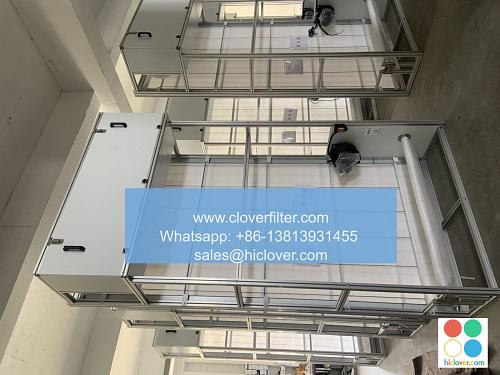Air Filters in Advanced Materials Research

The increasing concern about air pollution and its detrimental effects on human health has led to a growing demand for efficient air filtration systems. In response, researchers in the field of advanced materials research have been working tirelessly to develop innovative air filters that can capture a wide range of pollutants, including particulate matter (PM), volatile organic compounds (VOCs), and other gaseous pollutants. This article highlights the recent advancements in air filter technology, emphasizing the role of nanomaterials, membrane technology, and biomimetic design in improving air quality.
Nanomaterials-based Air Filters
Nanomaterials, such as nanofibers, nano particles, and graphene, have been widely explored for their potential in air filtration due to their unique properties, including high surface area, reactivity, and thermal stability. These materials have been used to develop high-efficiency air filters that can capture ultrafine particles (UFPs) and other pollutants with high precision. For instance, nanofiber-based air filters have been shown to have a high filtration efficiency of up to 99.99% for particles as small as 10 nm.
Membrane Technology for Air Purification
Membrane technology has emerged as a promising approach for air purification, offering a high-efficiency and energy-efficient solution for removing pollutants from the air. Membrane-based air filters use a semipermeable membrane to separate pollutants from the air, allowing clean air to pass through while trapping pollutants. This technology has been successfully applied in various fields, including indoor air quality control, industrial pollution control, and transportation systems.
Biomimetic Design for Air Filtration
Biomimetic design, which involves mimicking nature’s patterns and processes, has inspired the development of innovative air filters that can efficiently capture pollutants. For example, biomimetic membranes have been designed to mimic the structure and function of natural membranes, such as the lotus leaf and shark skin. These membranes have been shown to exhibit high water repellency and anti-fouling properties, making them ideal for air filtration applications.
Application Areas for Advanced Air Filters
The advanced air filters developed through materials research have a wide range of applications, including:
* Indoor air quality control: Improving the air quality in buildings, homes, and other enclosed spaces to reduce the risk of respiratory diseases and other health problems.
* Industrial pollution control: Reducing emissions from industrial processes and protecting workers from hazardous airborne pollutants.
* Transportation systems: Improving air quality in cars, buses, trains, and other vehicles to reduce the risk of respiratory problems and other health issues.
* Medical facilities: Providing a clean and safe environment for patients, visitors, and healthcare workers in hospitals and other medical facilities.
* Aerospace and defense: Developing advanced air filtration systems for military and aerospace applications, such as gas masks and aircraft cabin air filtration.
Conclusion
In conclusion, the development of innovative air filters through advanced materials research has the potential to significantly improve air quality and reduce the risks associated with air pollution. By leveraging the unique properties of nanomaterials, membrane technology, and biomimetic design, researchers can create high-efficiency air filters that can capture a wide range of pollutants, including particulate matter, VOCs, and other gaseous pollutants. As the demand for clean air continues to grow, the application areas for these advanced air filters will expand, leading to improved indoor and outdoor air quality, reduced health risks, and a better quality of life for people around the world. It looks like you didn’t include a prompt. Please go ahead and ask me something, share a topic you’d like to discuss, or provide a question, and I’ll do my best to help!

